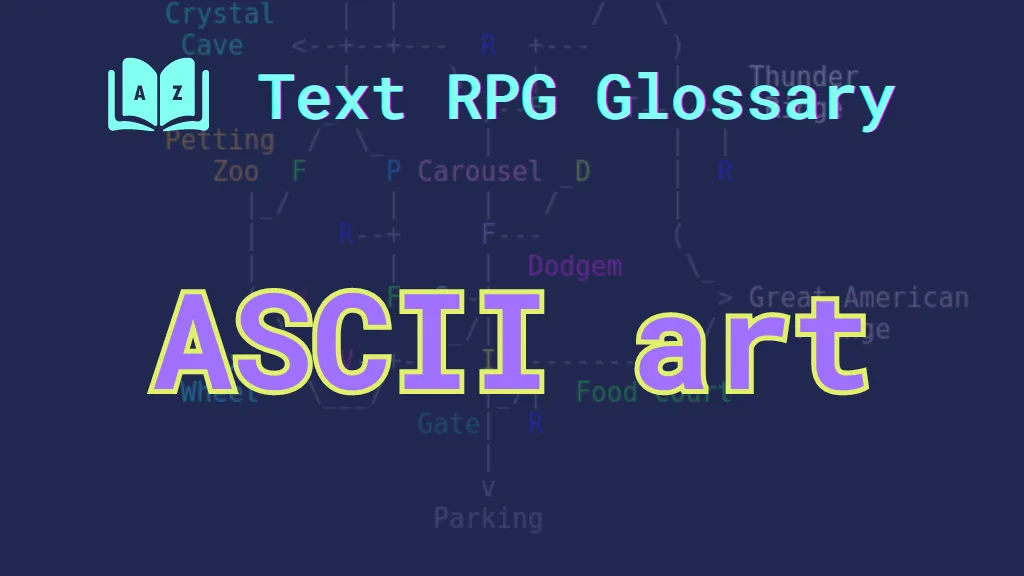ASCII art is one of the most enduring creative techniques in programming history, combining technology and artistry through the clever use of simple characters. Rather than relying on images, ASCII art is made entirely of letters, numbers, and symbols arranged to form recognizable shapes and designs. This approach dates back to early computing, where limitations on graphics meant developers had to rely on characters to create visual effects. Even though modern systems support high-resolution images and sophisticated graphics libraries, art has not disappeared — in fact, it has enjoyed a resurgence thanks to its nostalgic charm and practicality in text-only environments.
Its greatest strength lies in simplicity and universal compatibility. ASCII art is plain text, so it requires no image libraries, special file formats, or additional resources to display. Any system that can render text can display art — from vintage terminals to modern IDEs and browsers. This makes it an appealing choice for developers looking to add visual elements without complicating their project dependencies. Whether used as logos in CLI tools, diagrams in documentation, or stylistic banners in source code, art continues to give programming projects a unique personality and a visually engaging edge.
With software development evolving rapidly, art is finding new relevance in areas such as DevOps, open-source collaboration, and even automated documentation generation. Developers are using it not just for decoration, but also to enhance code readability, communicate concepts visually, and improve user experience in lightweight, resource-efficient ways. This article explores how ASCII art can be used in programming projects, its benefits, challenges, and the best practices that ensure it remains both functional and aesthetically pleasing.
Role of ASCII Art in Programming
Enhancing Readability
One of the most common uses of ASCII art is to improve code readability. Large codebases can become difficult to navigate, especially for newcomers. Developers often use ASCII art as section dividers, giving each function, class, or configuration block a visually distinct header. For instance, an ASCII banner reading “DATABASE CONFIGURATION” makes it easy to spot where database-related code starts in a file. This saves time for anyone scanning through hundreds of lines of code and promotes better organization within the project.
ASCII dividers are also helpful for collaborative teams. When multiple contributors are working on the same repository, clear visual separators reduce the chance of confusion. They serve as visual bookmarks, making code reviews faster and reducing cognitive load. This is particularly useful in projects where comments alone are not enough to distinguish one block from another.
By turning abstract code sections into visually distinct blocks, ASCII art gives programmers a mental map of the file structure. This makes onboarding easier for junior developers and increases overall project maintainability.
Communicating Ideas Visually
ASCII art isn’t just decorative — it can be a powerful tool for communication. Developers frequently use ASCII diagrams to represent complex logic flows, tree structures, or network topologies. Unlike images, ASCII diagrams are directly embedded in the source code or documentation, meaning they remain version-controlled, searchable, and editable without leaving the development environment.
For example, a developer designing a state machine might draw its states and transitions using ASCII arrows and boxes. This serves as an instant reference for anyone reading the code later, preventing misunderstandings and reducing reliance on external design documents.
Even in README files, ASCII art diagrams help explain relationships between modules, class hierarchies, and APIs in a way that is clear and accessible to anyone browsing the repository, regardless of what device or platform they are using.
Branding Projects
A well-designed ASCII logo can serve as a project’s identity. When a user runs a command-line tool and is greeted with a creative banner, it sets the tone for the entire experience. This type of branding builds recognition, especially for open-source projects that rely on community adoption.
For instance, popular frameworks often display ASCII logos on startup, making them instantly recognizable. This is not just aesthetic — it builds trust by signaling that the project is polished and actively maintained. ASCII branding can even be dynamically styled, with color codes or animations for added flair.
Practical Applications of ASCII Art
Command-Line Interfaces
Terminal-based programs have limited graphical capabilities, but ASCII art bridges the gap by making interfaces visually engaging. Many CLI tools display banners, loading screens, or ASCII-based progress indicators when performing tasks. These visual cues provide feedback to users and make the experience less monotonous.
In interactive shells, ASCII art can be used to build text-based menus, box borders, and even icons that guide users through available commands. For developers working with embedded systems or remote servers with minimal resources, ASCII art becomes a practical solution because it doesn’t depend on GUIs or high-performance graphics.
Documentation and Tutorials
Clear documentation is one of the most important parts of a successful software project. ASCII art can greatly improve the readability of documentation by providing inline diagrams and flowcharts. Because it is plain text, it displays consistently in GitHub README files, Markdown-based documentation, and even text-based help menus.
For example, when explaining a microservice architecture, ASCII art can visually represent services, message queues, and databases, helping readers grasp the relationships instantly. Tutorials can also use ASCII diagrams to illustrate workflows, reducing the need for separate image files that may not render properly in every context.
Debugging and Logging
Debug logs can quickly become overwhelming when dealing with large-scale applications. ASCII art can make logs easier to read by adding banners or section separators between events. A visually distinct error message helps developers spot issues faster during live debugging sessions.
Some developers go even further by adding ASCII art to represent system states, performance metrics, or warnings. These visual elements can make logs more user-friendly, especially when monitoring them in real time on remote servers or terminal dashboards.
Benefits of Using ASCII Art
Lightweight and Compatible
One of the biggest advantages of ASCII art is its universal compatibility. It works on any system that can display text, making it suitable for cross-platform projects. Unlike images that require additional resources and may fail to load in certain contexts, ASCII art always displays as intended when paired with monospaced fonts.
This lightweight nature also reduces storage requirements. Projects that must remain small — such as firmware, containerized tools, or embedded software — benefit from art because it avoids unnecessary file bloat.
No Extra Dependencies
Adding images to a project often means managing extra assets and ensuring they are correctly referenced and loaded. art eliminates this complexity since it lives directly inside the source code or documentation. There’s no need to worry about broken image links or additional package installations.
This makes art especially valuable in environments where installing extra libraries is impractical or security-sensitive. Developers working on internal tools or scripts can keep everything self-contained while still adding a touch of visual design.
Creative Expression
Beyond its technical advantages, art gives developers a way to express creativity. Crafting a custom logo, mascot, or decorative divider can make working with a project more enjoyable. It also adds personality, which is especially important for open-source projects competing for attention.
Key Advantages:
- Works across all platforms and devices
- Reduces project size and complexity
- Adds personality and fun to codebases
Challenges and Limitations
Formatting Consistency
While art is simple, it depends heavily on consistent formatting. Misaligned characters can ruin a design, especially when viewed with proportional fonts that break the layout. Developers must ensure they use monospaced fonts when creating and viewing ASCII art.
Version control systems may also reformat whitespace if not properly configured, leading to broken designs in collaborative environments. For this reason, some teams store art in dedicated files and reference them in documentation to avoid accidental changes.
Readability Concerns
Overly complex ASCII art can hurt readability instead of helping it. Large banners, intricate diagrams, and dense character patterns may distract developers and make files harder to scroll through. Keeping designs simple is key to maintaining their utility.
Some developers solve this by using collapsible sections or storing banners in separate modules that are only called when needed. This prevents clutter in the main code files.
Maintenance Effort
ASCII art can introduce a small maintenance overhead. If a project name changes, the logo must be updated manually. Similarly, diagrams representing system architecture may need revisions when new modules are added or workflows change.
Common Issues:
- Alignment breaks on non-monospaced fonts
- Risk of clutter when overused
- Requires manual updates during version changes
Tips for Effective ASCII Art
Use Monospaced Fonts
Always design art with monospaced fonts, which guarantee consistent alignment across text editors, IDEs, and terminals. This ensures the design remains clean and professional.
Keep It Minimal
A minimalist approach is usually best. Simple shapes, clean lines, and limited character use improve clarity and make art easier to maintain over time.
Automate Generation
Modern tools can generate art banners automatically from text input. These generators save time and make updating designs simple. Developers can even integrate ASCII generation into build scripts.
Best Practices:
- Keep designs clear and concise
- Test across multiple terminals or editors
- Automate updates to reduce manual work
Modern Use Cases
Open-Source Projects
Many open-source projects use art to stand out. README files often include logos, giving repositories a professional look while keeping them lightweight. This branding helps attract contributors and signals project maturity.
Retro-Themed Applications
Indie developers and hobbyists love art for retro-inspired games, interactive fiction, and command-line utilities. Its nostalgic look captures the feel of early computing, making projects memorable.
Community Engagement
Some developers hide Easter eggs inside codebases, which contributors discover while exploring. These playful additions create a sense of community and make contributing more enjoyable.
FAQ’s
Can ASCII art improve code readability?
Yes, art can significantly improve code readability by visually separating sections, highlighting important functions, and creating clear visual structure. This helps developers navigate large codebases quickly and reduces confusion when multiple contributors are involved.
Is ASCII art still relevant in modern programming projects?
Absolutely. Even though modern systems support advanced graphics, art remains relevant for terminal-based applications, lightweight projects, and open-source repositories where compatibility and simplicity matter.
What are the best tools to create ASCII art for code projects?
Popular tools include online ASCII art generators, Figlet, JavE, and text-to-scripts. These tools allow you to quickly generate banners and logos directly from text without manually drawing each character.
Does ASCII art work across all platforms and editors?
Yes, as long as monospaced fonts are used. ASCII art displays consistently across terminals, IDEs, and documentation systems, making it one of the most universally compatible design options for developers.
What are the common mistakes to avoid when using ASCII art in code?
Avoid overly complex designs that clutter your code, using proportional fonts that break alignment, and forgetting to update ASCII diagrams when project structure changes. Keeping it simple ensures readability and maintainability.
Conclusion
ASCII art is far more than a nostalgic throwback — it is a practical, versatile, and creative tool that continues to add value to programming projects. Its lightweight nature, ability to work across all platforms, and potential for improving readability make it an excellent choice for developers. By following best practices, keeping designs simple, and automating updates, programmers can use ASCII art to enhance documentation, improve user experience, and build stronger project branding. When applied thoughtfully, ASCII art transforms code from plain text into something visually engaging and memorable.


